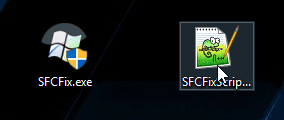- Aug 13, 2021
- 3,348
WARNING! The following fix is specific to the user's system in this thread only. No one else should follow these instructions, as it could damage your system.

Next ...
- Download the attachment SFCFix.zip and save it on your desktop.
- Save any work you have open, and close all programs.
- Drag the SFCFix.zip file over the SFCFix.exe executable and release it.

- SFCFix will launch, let it complete.
- Once done, a file will appear on your desktop, called SFCFix.txt
- Open the file, then copy and paste its content in your next reply.
Next ...
- Click Search button and type Command Prompt
- From the results, right click on the Command Prompt icon, and select Run as administrator
- A Command Window will open.
- Copy paste the command below into it, then press Enter
- Dism /Online /Cleanup-Image /RestoreHealth
- Once DISM has finished running ...
- If it completes successfully, try updating again ...
- If successful please let me know.
- If DISM does not complete, or if an update attempt is unsuccessful ...
- Please attach your ... C:\Windows\Logs\CBS\cbs.log ... to your next reply.
- If the file is too large, upload it to a file sharing service, and post me the link.
- Examples of services to upload to are WeTransfer and TransferKit and SendFileOnline
